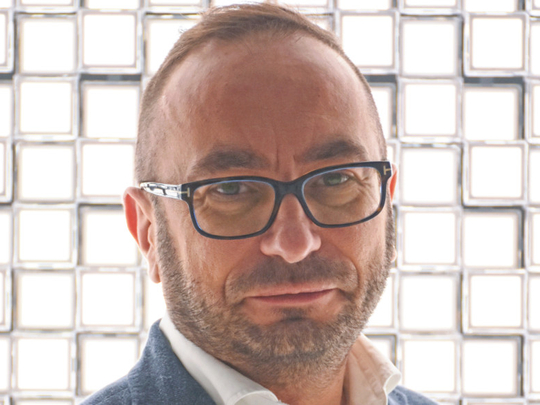
Having mentored and nurtured the regional creative scene as the founding fair director of Design Days Dubai and Dubai Design Week, Cyril Zammit has a proven eye for singularly exceptional design moments. In his new role as an independent design consultant and adviser, he lends his expertise to a broader context.
“It was my 12th consecutive year of attendance,” says Zammit of the 56th edition of Salone del Mobile. Arguably the world’s foremost design event, careers are made, brands are launched and reputations shattered at the Milanese design week. “From a colossal trade show to small displays in old palazzo or improvised galleries, the fair feels like a treasure hunt when you dedicate yourself to the discovery of the very best.”
Exclusively for Gulf News tabloid! he curates his pick of the finest design moments at the recently concluded fair.
COS X STUDIO SWINE
The most joyous moment at Salone’17, this partnership between COS and Studio Swine, an artistic collaboration between Japanese architect Azusa Murakami and British artist Alexander Groves led to a blossoming sculpture that evoked childhood memories of bubbles and mist. The duo created an immersive, multi-sensory experience entitled New Spring, which filled decommissioned former theatre, Cinema Arti, in central Milan. The sculpture emitted mist-filled blossoms that burst on contact with skin but survived when met with textured fabrics.
SABINE MARCELIS X AESOP
2017 belongs to Marcelis. After a successful Dawn series for Victor Hunt gallery, she had no less than 7 participations in Milan this year. Her work is characterised by pure forms which highlight material properties. To celebrate Frame magazine’s 20th Anniversary, the Dutch designer designed a window installation for Aesop exclusively in the Corso Magenta store. Exploring Marcelis’ fascination with light paths, the installation, Vedovelle Fountain, explored how water in motion can affect perceptions of materiality, light, and space while improving its environment.
DELTA BY FORMAFANTASMA
Delta is a collection of objects — the fruit of the collaboration between the Roman Design Gallery Giustini Stagetti and Formafantasma. The project curated by Domitilla Dardi, is part of the gallery’s program ’Privato Romano Interno’ curated by Emanuela Nobile Mino that, since 2012 with the first collection designed by Fernando and Humberto Campana, commissions designers to use Rome as a source of inspiration for new furniture pieces.
THE JELLYFISH VASE
The Japanese studio never disappoints. They presented a composition featuring 30 of their new vases made of ultrathin transparent silicon. The vases were double-dyed to further enhance their silhouette. Submerged in a floating tank, these vases, gently swayed, obeying the direction of water current. By making the water inconspicuous, the studio questions the traditional roles of water, vase and flower. In doing so, it succeeds in delivering a statement on how divides are best, a thing of the past.
OBJET NOMADES BY LOUIS VUITTON
For the past five years the French fashion super label has explored the notion of luxury travel through a thoughtful edit of creative objects. The latest edition of the ‘Objet Noamdes’ project was unveiled in Milan, and while the arena is product design, LV’s commitment to tradition, the crafts and select materials runs through the home collection like the proverbial red thread. This year, the brand invited a wide range of designers — from Marcel Wanders to India Madhavi — to create ten new pieces that embody the spirit of a life well travelled.
DECODE/RECODE
Exploring the potential of modular glassware, Salviati, the Italian purveyors of traditional Murano glass illuminated one of the abandoned vaults of Milan Central Station with an arresting installation that included Luca Nichetto’s Pyrae. Featuring 53 totems made from different combinations of stacked glass works, the exhibition explored how centuries-old methods can be combined with contemporary aesthetics. To deliver this modular beauty, Nichetto first designed a base set of 25 modules. Ten traditional techniques and 15 colours were explored. The result is an expressive, characterful community of original works, with not one the same.









